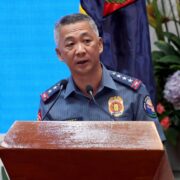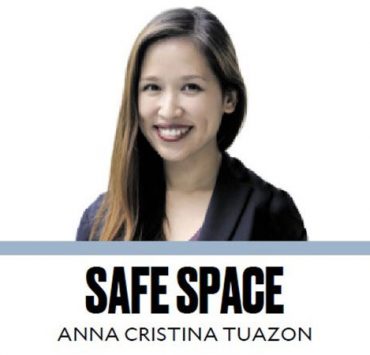Northeast Asia nuclear-free zone alliance

Seoul—Eighty years since a nuclear Armageddon leveled two Japanese cities, ending the bloodiest armed conflict in history, nuclear anxiety is rising in this region. At the crux of this paradoxical security dilemma is the Korean Peninsula, with no end in sight to its division, imposed by the Allies upon their victory. North Korea continues to expand its nuclear stockpile as a de facto nuclear power, and big-power rivalries intensify to reshape the geopolitical landscape.
North Korea’s nuclear and missile capability poses a major security threat in the region and beyond, with cross-border dialogue frozen for years, deepening security concerns. Successive administrations in Seoul and Washington have tried to curb Pyongyang’s nuclear ambitions over the past three decades, but to no avail. Negotiations for denuclearization fell apart, with the three stakeholders aiming for different goals.
The Joint Declaration of the Denuclearization of the Korean Peninsula, signed by both Koreas in 1992, says they “shall not test, manufacture, produce, receive, possess, store, deploy or use nuclear weapons, and shall use nuclear energy solely for peaceful purposes.” A perfect description of denuclearization at that time, the document has a critical shortfall: It regards denuclearization as business between the two Koreas, whereas the United States would be the real party in any strategic conversation with the North.
In February 2019, then United States President Donald Trump and North Korean leader Kim Jong-un met in Hanoi amid fanfare. Hampering their second summit were incompatible notions of what “complete denuclearization” meant, and what sanctions would be lifted as a reward. The historic summit was cut short with “no deal.”
As the dialogue for denuclearization at the government level faltered, oftentimes due to the conflicting policies of South Korean and US administrations, the civil society movements toward establishing a “Northeast Asia nuclear-weapon-free zone,” or NWFZ, have also failed to gain traction. Still, the momentum of such movements survives among the civic and academic communities, especially those advocating for peace on the peninsula and in the region.
Unlike a bilateral agreement, the treaty for an NWFZ constitutes a legally binding multilateral mechanism. It prohibits the acquisition, possession, placement, testing, and use of nuclear weapons. Under the treaty, signatories already armed with nuclear weapons would promise not to use or threaten to use them against any other state in the zone. Within the Northeast Asia framework, it would involve six countries—the two Koreas, Japan, the US, China and Russia—in a shared approach to global nuclear nonproliferation and disarmament.
Currently, 115 countries belong to six NWFZs, covering most of the Global South. They include Latin America and the Caribbean, the South Pacific, Southeast Asia, Africa, Central Asia, and Mongolia.
While the existing NWFZs can be guidance for creating and operating a new zone in Northeast Asia, the unique circumstances surrounding the Korean Peninsula will present unprecedented challenges. A peace regime on the peninsula will be a prerequisite, which will only be attainable when North Korea is given security assurances that pacify its fear of US deterrence.
It appears to be the right time, with the Lee Jae Myung administration pursuing dialogue and reconciliation with the North. In his summit with Trump, reportedly scheduled for later this month, Lee may put all necessary matters on the table to redraw the security map around the peninsula for a permanent peace regime.
What is noteworthy about the movements for a “Northeast Asia free from fears of nuclear war” is that they are based on alliances between South Korean and Japanese civic groups. It appeals as a strength this particular year, marking the 80th anniversary of the atomic bombings in Hiroshima and Nagasaki on Aug. 6 and 9, 1945, respectively, which led to Japan’s surrender and Korea’s liberation from Japanese rule.
Northeast Asia is the sole region of the world to have suffered the atrocity of nuclear warfare, and Koreans, alongside the Japanese, experienced its cataclysmic destruction. In Hiroshima and Nagasaki, some 210,000 people are known to have died. Separate statistics showed 40,000 Koreans died, most of them mobilized for wartime forced labor.
Numbers don’t tell everything, though. “Real war is hell. And the atomic bomb—what poetry could capture that? What painting, what song, what novel? Nothing,” wrote Takashi Nagai, a radiologist at Nagasaki Medical University and survivor of the bombing, in his 1949 book, “The Bells of Nagasaki,” which is recognized as one of the most powerful testaments to nuclear horror.
Nagai goes on, “It was a silent, apocalyptic force, flattening everything like a roller over an anthill. There’s no beauty. No honor. Just death. Oh mankind, plan no more wars. With the atomic bomb, war is suicide.” The Korea Herald/Asia News Network
——————
Lee Kyong-hee is a former editor in chief of The Korea Herald.
——————
The Philippine Daily Inquirer is a member of the Asia News Network, an alliance of 22 media titles in the region.

















Deforestation is climate action’s blind spot